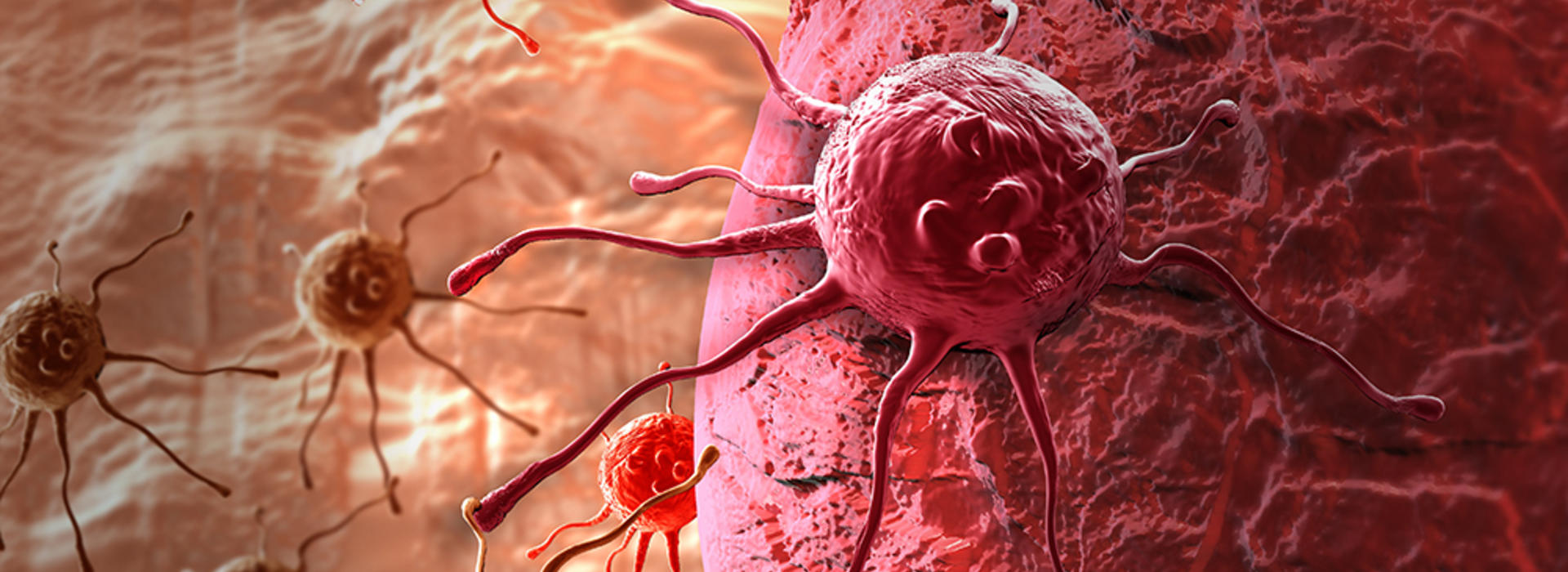
U Laboratory Studies Protein Kinase Role in Cancer Cells, Treatment
Research teams around the globe continue to dive deeper into the cellular mechanisms of cancer, hoping to develop drugs that target certain functions within cancer cells to prevent their growth and proliferation. A team at the University of Minnesota Medical School studies the disease at one of the smallest levels possible—the protein kinase.
“Our lab is looking at structural changes in protein kinases that occur on a tiny scale. We’re talking like an angstrom, which is the diameter of a hydrogen atom,” said Nicholas Levinson, PhD, associate professor in the Department of Pharmacology.
These signaling proteins are part of a system within each cell that controls a cell’s ability to grow and divide. In some cancers, mutated versions of these kinases play a critical role in tumor growth, and as such, have become the target of several clinical drug trials and some successful therapies within the last 20 years.
“The idea is that these drugs are targeted therapeutics; they are not killing every cell that’s dividing. They are going after a specific protein that is the specific cause of cancer,” Dr. Levinson said. “While they are successful, they are prone to clinical resistance.”
Dr. Levinson says that patients treated with current versions of these drugs—kinase inhibitors—develop drug resistance within a year. So for most cancers, the use of kinase inhibitors is merely meant to delay progression of the disease by six months to a year.
He has studied protein kinases for over 15 years. Understanding why and how drug resistance develops has been the core focus of the Levinson Lab’s work, and to-date, the team has received nearly $3 million to fuel their studies.
“We have two branches of the lab—one has been trying to understand the role of conformational dynamics in kinase function and regulation, and the other is trying to understand the role in drug recognition and resistance,” Dr. Levinson said.
Protein kinases have a very flexible structure, switching “on and off” based on their shape, according to Dr. Levinson. When they’re “on” or active, the kinases form a shape that leaves an opening for ATP (or Adenosine Triphosphate—an energy source) to bind to them and carry them through to their next function in supporting cell growth.
“We’ve been able to track these structural changes in solution, and we were one of the first labs to be able to do this, which has given us insight into just how dynamic this process is,” Dr. Levinson said.
The Levinson Lab is learning how a kinase’s shape and flexibility affects drug recognition and binding. Current kinase inhibitors take the place on an active kinase where the ATP would normally bind—ultimately, preventing cell growth. While the drugs work for a while, these inhibitors change the shape of the kinase, which impacts how tightly the drug binds and how the kinase interacts with other protein partners within the cancer cell.
“What we’ve been able to do, by applying these solution methods, is track, in real-time, when a drug binds to one of these kinases and changes the flexibility and shape of the protein. And, we can even get information about the energetics of that process—so the degree to which an inhibitor promotes one structural state or the other,” Dr. Levinson said.
In 2018, the Levinson Lab used these methods to analyze 24 kinase inhibitors that were in clinical development for a kinase drug target, called Aurora-A. What they discovered is a numerical range in which the inhibitors prefer either the kinase’s active-like state or inactive-like state.
“With these kinase drugs, people thought they had effects, but they’d never really been quantified. What we’ve done is put numbers on that for the first time, and the effects can be large—more than 100-fold,” Dr. Levinson said. “Now, it’s a whole other level of challenge to design selectivity into these drugs because you don’t just need to target a given kinase; you also want to make sure that the drug can target the right kind of form of that given kinase—the one that’s actually causing uncontrolled cell growth and proliferation.”
The next steps for the Levinson Lab are two-fold: understanding the role of kinase flexibility across the whole family of protein kinases and working with medicinal chemistry groups to design better kinase inhibitors.
“We’ve looked at this kinase here and this one here, but we would like to look at the whole protein family and figure out how big are these conformational dynamics for all of them—is it a really general phenomenon or specific to these particular cases?” Dr. Levinson said. “We’d also like to use this information to help design new inhibitors that are tailor-made to cause exactly the right change in structure and dynamics that will mediate the desired therapeutic effect.”